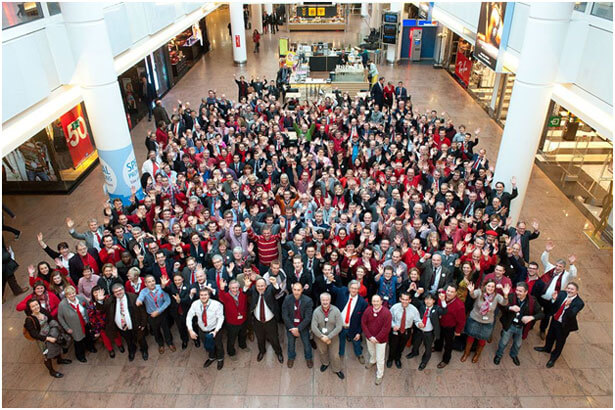
Employers are always looking for new ways to recruit and engage employees. Understanding what makes employees stick around and enjoy their job requires the analysis of things such as compensation, leadership, and benefits. There are trends in behaviors which are important for companies to take note of.
When looking at who make up the population of workers in the U.S., women make up around 50 percent and millennials comprise around 25 percent. With these two groups making up a large percentage of the workforce, their needs must be addressed.
The recruitment process has changed significantly from years ago. Job candidates have access to company reviews, interview questions, and salary information to help them prepare more than ever. Providing a clear employer brand will attract candidates worth keeping. According to Gallup, 39 percent of women claim that when they are job searching, the reputation or brand of the company is “very important”. This means that employers need to take notice of what brand they are portraying.
Millennials are especially difficult to keep around. Deloitte estimates that 66 percent anticipate leaving their company in the next three years. Workers feel they can move jobs safely now, compared to the recession in 2009 when the unemployment ratio of Americans to open jobs was at 6.6 percent. The Bureau of Labor Statistics places the unemployment ratio of Americans to open jobs at 1.4 to 1. This also means that their job openings remain open longer because there isn’t such a demand for them. Workers can wait until a job they truly want comes along. DHI Hiring Indicators calculated that the average amount of time that a job sat open last year was just over 28 days. From 2001-2003, jobs sat open for only 19.3 days on average.
In order to make sure you attract potential employees quickly and ones that will stay with the company, it is important to implement quality programs. The majority of CEO’s are worried that the key skills they are looking for are in short supply, according to PwC. Brandon Hall suggests that companies that invest in employer branding are three times more likely to make quality hires. He also believes that companies that then invest in the candidate's experience will improve their chances of quality hires by 70 percent.
Engaging employees is the top concern for employers. A Gallup survey found that only a third of U.S. employees are engaged in the company. When considering the female and millennial populations of the workforce, more women are engaged, 35 percent, compared to only 29 percent of millennials. Perhaps the most startling fact is that only 4 percent of company and HR leaders think they are very good at engaging their workforce.
Companies know how critical employee engagement is to their success. Eighty-five percent of executives place engagement as either an important or very important priority for their company, according to a Deloitte study.
Engaging speaks to the money side of a company as well. Companies that have implemented a formal engagement strategy are 67 percent more likely to increase their revenue on a yearly basis. The Journal of Corporate Finance reports that companies can also boost their market value by 7.9 percent by increasing their employee satisfaction rating by one point on Glassdoor.
The leadership of a company directly affects its employees. A strong leader can empower those around them. Investing in the development of strong women and millennials will directly influence your company’s brand. Deloitte found that 63 percent of millennials do not feel that their leadership skills are being developed fully, with only 7 percent of company leaders reporting that they have accelerated leadership programs for millennials to participate in. Just over 70 percent of millennials are willing to leave their job in the next two years, because they are unhappy about the lack of development in their leadership skills by the company.
See Top 6 Things Good Leaders Know for more information.
Employees report better engagement when working for female managers. A Gallup study found that employees working for female managers are 1.26 times more likely to “strongly agree” that someone at work encourages their development. Employees working for a female manager are also six percent more engaged than those working for a male manager.
With the type of leadership being so important, 86 percent of companies in a Deloitte survey see leadership as an important or very important issue. CEOs are seeing the need to adjust how they develop leaders. 49 percent of them are changing their strategy to focus on the leadership pipeline in order to attract, retain, and engage top talent. This is so that they stay relevant and competitive with other companies, according to PwC.
The benefits employees receive are making a transition to greater maternity/paternity packages and health insurance perks. These kinds of benefits make a big impact on the employee satisfaction for women and millennials. Gallup found that 60 percent of women and 48 percent of men place work-life balance and personal well-being as very important aspects to a new job. A higher benefit satisfaction brings greater job satisfaction, according to 84 percent of employees in a Guardian Life study.
See How to Handle Work-Life Balance at Your Company for more information.
The compensation factor demands a shift to salary transparency. This is so that there is pay fairness towards women and millennials. An SHRM report found that 95 percent of employees say compensation is important to their job satisfaction, but only 65 percent are satisfied with their compensation.
Keeping up with the trends in the changing HR landscape are more important to a company’s success than ever. Following the research conducted by sources like Gallup and Deloitte will help you lead your company toward being a top competitor that candidates, especially women and millennials, want to work for.
Photo: commons.wikimedia.org


